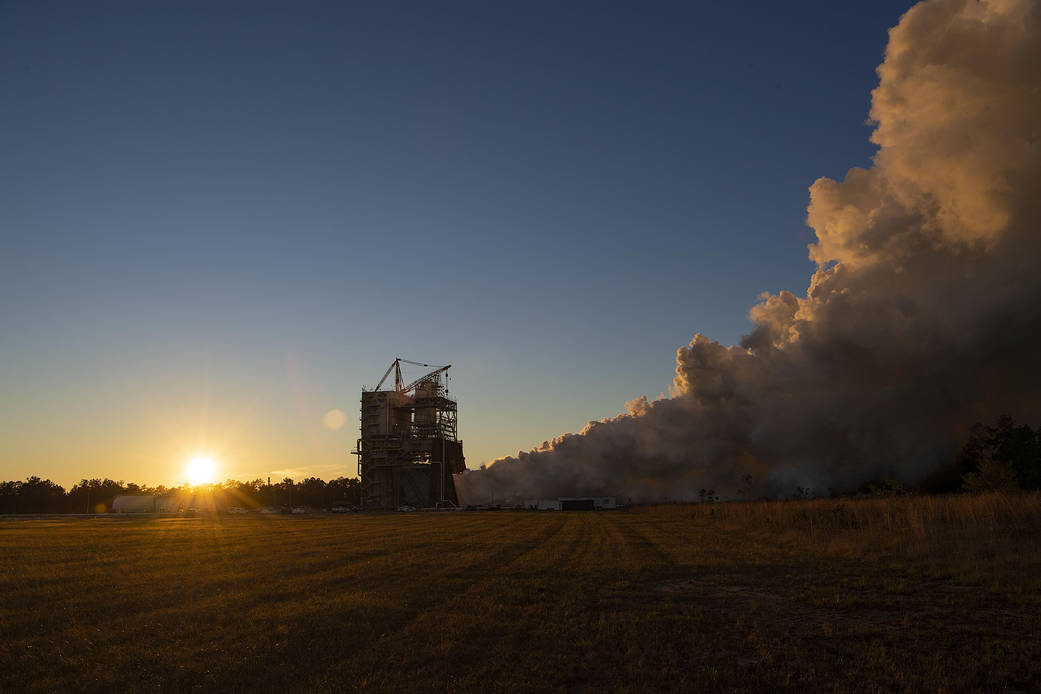
NASA ushered in the Gulf Coast fall season with force Nov. 15, conducting a full-power, full-duration 650-second RS-25 engine test on the A-1 Test Stand at Stennis Space Center near Bay St. Louis, Mississippi, where the agency is testing engines to help power its new Space Launch System (SLS) rocket. Operators fired development engine No. 0525 to a 113 percent thrust level for 60 seconds during the test, marking only the second time they have achieved the highest RS-25 power level. Engineers first fired development engine No. 0528 to that level during a February test at Stennis. Four RS-25 engines will help power SLS at launch, supplying a combined 2 million pounds of thrust and working in conjunction with a pair of solid rocket boosters to provide more than 8 million pounds of thrust. RS-25 engines for initial missions are former space shuttle engines, designed to provide a specific power level, categorized as 100 percent thrust. Through the space shuttle years, the engines were modernized to provide additional thrust up to 109 percent of the original level. For SLS, they have been modified again to provide up to 111 percent of original thrust, with the 113 percent hot fires at Stennis allowing operators to test a margin of safety. The test also marked the third time an RS-25 engine has been fired for the longer duration. Typical tests run 500 seconds, the amount of time (8 minutes, 20 seconds) the engine must fire to power the rocket from launch into space. The 650-second duration represents the time three RS-25 engines would have to fire to burn up propellant and power the rocket into orbit, if the fourth shut down early during an SLS launch. The longer time also allows operators to schedule and meet more performance objectives during a test. This hot fire was also the sixth on this engine in a current series of acceptance tests for RS-25 engine controllers that will be used on future SLS flights. The new controller is a key component of recent engine modifications. It operates as the brain of the engine, helping it to communicate with the rocket and controlling engine operation and internal health diagnostics. The hot fire also featured continued testing of two innovative engine components – a 3D-printed pogo accumulator to dampen pressure oscillations that can cause flight instability and a main combustion chamber fabricated using a new hot isostatic pressing (HIP) bonding technique that saves considerable time and money. RS-25 tests continue NASA’s progress toward Exploration Mission-1, where the new rocket will send an Orion spacecraft around the Moon and back to test critical capabilities needed to carry astronauts farther in space than ever before, and eventually to Mars. On Exploration Mission-2, SLS will carry astronauts aboard Orion on a return to deep space. Prior to those flights, NASA will test the SLS core stage on the B-2 Test Stand at Stennis. RS-25 tests at Stennis are conducted by a combined team of NASA, Aerojet Rocketdyne and Syncom Space Services operators. Aerojet Rocketdyne is the RS-25 prime contractor. Syncom Space Services is the prime contractor for Stennis facilities and operations.
























